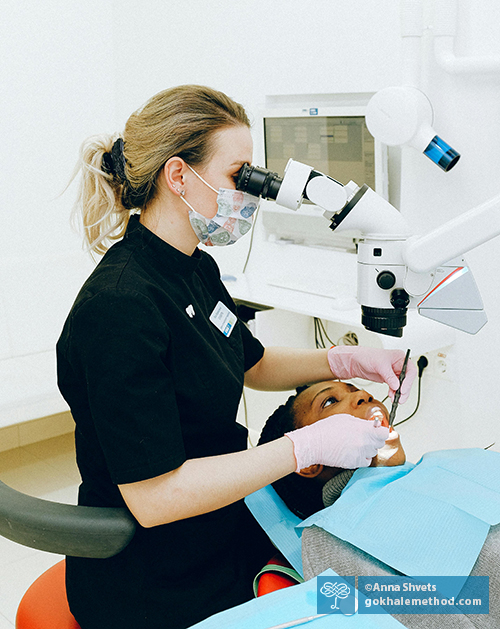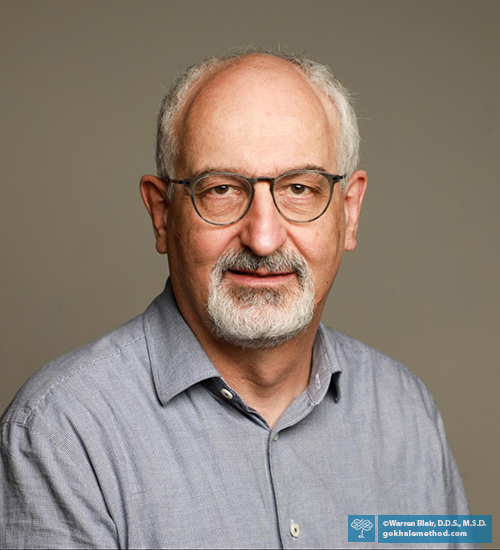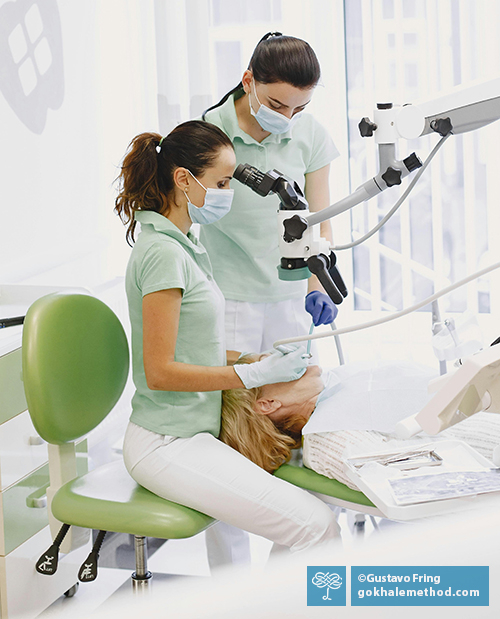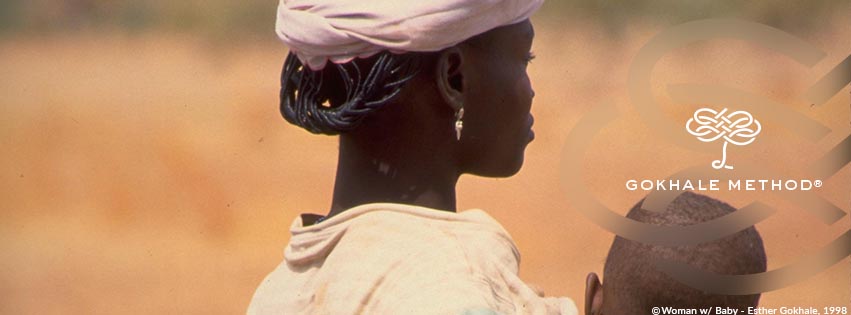Next time you are in the dentist chair, spare a thought for your dentist’s posture and the postural demands of their job. Doing dental procedures shares many challenges with other surgical procedures, such as having to maintain a steady position for long periods, maintain a clear line of vision, and hold and manipulate tools with precision. Working in the oral cavity of a conscious patient is a pretty significant challenge.

Dental professionals place many physical demands on their structure. They can be regarded as “occupational athletes.” Image from Pexels
Dental personnel and health
Unfortunately, these demands take a toll. Of adults in the U.S. general population, 13.8% experience significant neck pain; among dentists, that figure is a staggering 67%. Dentists and other oral health practitioners (OHPs), including dental nurses and hygienists, also report suffering from above average incidences of lower back pain, headaches, shoulder problems, and work-related tendonitis, bursitis, and carpal tunnel syndrome. Such problems can make life miserable, both in and out of the dental office. Some OHPs are forced to abandon a career they have spent up to eight years training for. Of dentists taking ill health retirement, 55% cited musculoskeletal disorders as the cause.
The Gokhale Method for Dentists and Oral Health Practitioners
Since 2008, well over 100 dental workers have sought out the Gokhale Method® to help them solve their posture puzzle and get out of pain. They are both welcome and in need of what our courses (in-person Foundations, one-day Pop-up, and online Elements) offer. Given their particular professional needs, we are now working with some of our dentist and hygienist alumni to develop a special Gokhale Method offering for oral health practitioners.
This will be a tailored training delivered at dental offices, clinics, and teaching hospitals. The goal is that oral health practitioners learn the posture tools they need to future-proof their careers.

An introductory workshop for oral health practitioners with Gokhale Method teacher Julie Johnson was recently received with great enthusiasm at a dental practice near Stuttgart, Germany.
Dental practice team members, Bridget, Amy, and Julie, practice seated hip-hinging with teacher Julie Johnson. The Gokhale PostureTracker™ wearable gives biofeedback—and they’re having fun!
From a dentist’s perspective
One of Julie’s recent Gokhale Foundations students is Warren Blair, an American dentist living and working in Germany who, though counting himself fortunate to have had relatively few serious musculoskeletal aches and pains over his four decades of practice, understands the value of the Gokhale Method.

Warren Blair, D.D.S., M.S.D., is a specialist in periodontology, implantology, microsurgery, and endodontics—and a student of posture!
Warren shared many things about the ergonomics of dentistry with us, both from the dentist’s and patient’s perspective:
The physical aspect is a problem—all dentists have problems. Some are in their mid-thirties and they're walking around crooked because they have a charley horse (muscle spasm). I periodically stretch the muscles around my back and shoulders, or pull away from my microscope eyepieces to reset. Doing the Gokhale Foundations I have learned that posture is key to the solution; having healthy posture early on in the profession will prevent future problems, but if problems with your musculoskeletal system do crop up then you can do something about it by changing your habits and adopting the principles of healthy posture.
Warren confirmed that dentists are taught not to round over their patients, and to work with their knees wide, but admitted that these positions are not always easy to maintain on the job. Learning and preserving healthy postural habits is especially difficult given that many dental workers, like most people in our culture, will, unfortunately, be approaching their training from a poor posture baseline.
Healthy posture is an ecosystem
The basic instruction that trainees receive is not nearly as nuanced or integrated as the movement patterns taught in the Gokhale Method. In typical modern western fashion, we are all given stand-alone instructions, e.g., “don’t round when you bend.” The hip-hinging bend taught as part of the Gokhale Method is part of a whole movement pattern, involving nestling an anteverted pelvis, getting the femurs out of the way of the pelvis, anchoring the rib cage, engaging the inner corset, keeping the shoulders posterior, and maintaining a healthy neck position. Altogether, these elements give dentists the resilience needed for sustained bending, even with some variety of twist.

This practitioner is maintaining her J-spine, with her behind behind and her back tall and relaxed. This is a healthy baseline for sitting and forward bending. Image from Pexels
Posture instructions given in isolation don't translate very effectively into practice. However, as part of a holistic education that pays attention to the way we do everyday life activities, posture training becomes transformative. For example, walking well, both in and out of the office, is a natural reset for a tight psoas muscle. Learning to stacksit allows your breath to mobilize your back. Sleeping positions, done well, can enable you to heal damage and inflammation.
Learning the Gokhale Method at work means you immediately put posture into practice in your profession, and sets up many opportunities for colleagues to support one another. If you are a dental or medical professional and would like to know more about how the Gokhale Method can help you and your team, please email: [email protected].
If you would like to support your dentist, send them this invitation to one of our free online workshops.
Best next action steps
If you would like to improve your posture, for work or leisure, get started by booking a consultation, online or in person, with one of our teachers.
You can sign up below to join any one of our upcoming FREE Online Workshops…


